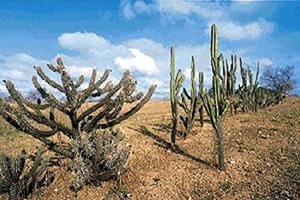The northeast region is divided into four sub-regions (zona da mata, agreste, sertão and half-north).
The Zona da Mata is the most developed and industrialized region in the northeast, it is located in the coastal areas of the region, in which the main urban centers are located.
In the forest area, the industrial activity is diversified, there is extraction of ores that strategically usually lead to the installation of companies in the vicinity of the deposits, another extremely important factor is the transport system, which in the essence of industrialization is fundamentally inserted in the transport of goods and raw material.
As the sub-region is more developed, it is necessary to install infrastructure in order to give rhythm and dynamism to the circulation of goods, capital, raw materials and people. The sub-region is also part of agricultural production, which is most often involved in export monoculture.

In the agreste, economic activities are linked to primary production, more precisely in agriculture and livestock. The wild has a characteristic favorable to polyculture, such as cassava, potatoes, bananas, etc., and animal husbandry, such as cattle and goats. The work is traditional and rudimentary, technology and productivity are practically not used. is low, as the production of the forest zone is destined for export, who supplies it with food is the wild.

In the sertão, the main economic activity is agriculture, cattle and goats are raised in most properties, the former is not so widespread as it is a large animal. size that requires a greater amount of resources such as water, pastures, as it is an area with a semi-arid climate and that suffers from long periods of drought, it is difficult to develop the livestock, the second is more successful for being smaller animals and better adapting to adverse situations imposed by weather conditions, the sertão has a herd of 9 million heads of goats. In agriculture, it develops in the form of subsistence, that is, production of food for family consumption.

The sertanejo suffers, year after year, the ills caused by the drought, so they are unable to produce their food in the practice of subsistence.
The mid-north is a transitional sub-region between the northeast and the north, where part of the Piauí and Maranhão, the economic characteristics are linked to rural, extractive and pastoral. However, the south of Maranhão is already included in the soybean map, in which many gauchos (who migrated there) develop the culture, the production of these areas is mechanized in large latifundia. An important point in Maranhão, in the context of soy, is the geographic strategy for shipping to the ports in São Luiz, capital of Maranhão.
Eduardo de Freitas
Graduated in Geography
Source: Brazil School - https://brasilescola.uol.com.br/brasil/o-nordeste-as-disparidades-socioeconomicas.htm
